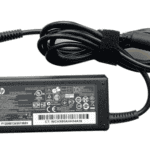Memory technology is entering a transformative phase, and DDR6 RAM is shaping up to be the centerpiece of that shift. As a successor to DDR5, DDR6 promises not only significantly higher speeds but also greater efficiency, capacity, and bandwidth—ushering in a new era for gaming, AI, content creation, and enterprise computing.
Expected to begin rolling out in late 2025 for enterprise systems and hitting consumer markets by 2026, DDR6 isn’t just an incremental upgrade—it’s a major architectural leap forward.
🧭 DDR6 Development Timeline
- Specification Finalization: The JEDEC Solid State Technology Association is expected to finalize the DDR6 1.0 standard by mid-2025. This will open the door for mass production and early adoption by server and HPC platforms.
- Enterprise Rollout: High-performance server farms, data centers, and AI compute systems are projected to be the first adopters by late 2025, where the need for greater memory bandwidth is most pressing.
- Consumer Availability: Desktop PCs, laptops, and gaming rigs will likely begin seeing DDR6 modules in 2026. Mainstream adoption could extend into 2027, especially as supporting CPUs and motherboards enter the market.
🚀 Performance Enhancements Over DDR5
DDR6 isn’t just about faster speeds—it’s a complete rework of how memory modules handle data:
- Higher Bandwidth: DDR6 is expected to launch with base speeds of 12,800 MT/s (mega transfers per second), with future iterations potentially reaching 17,000 to 20,000 MT/s. That’s nearly double what current DDR5 kits offer.
- More Memory Channels: Unlike DDR5’s two 32-bit channels per DIMM, DDR6 will feature four 16-bit channels. This change allows greater parallelism and more efficient data transfer, significantly reducing latency in high-load tasks.
- Larger Capacities: Modules are projected to reach up to 256GB per DIMM, compared to DDR5’s 128GB maximum. This is crucial for memory-intensive workloads such as 3D rendering, AI model training, and large-scale simulations.
- Lower Power Consumption: DDR6 is expected to run at lower voltages than DDR5’s 1.1V, which means better power efficiency—especially beneficial for laptops and servers where heat and energy usage are concerns.
- Enhanced Error Correction: DDR6 will expand its ECC (Error Correction Code) support, potentially including both on-die and off-die error correction for improved data integrity and system stability.
🔄 Platform Compatibility
Upgrading to DDR6 will not be as simple as swapping out old RAM sticks. Like with the shift from DDR4 to DDR5, DDR6 will require new CPU architectures and motherboards specifically designed to support the technology.
This means current DDR5-compatible systems will not be forward-compatible, making DDR6 a full-platform upgrade. Early adopters should expect initial costs to be high due to the premium nature of next-gen memory and the required ecosystem updates.
🧠 Who Will Benefit Most from DDR6?
The impact of DDR6 will be felt most significantly in workloads that demand high memory throughput and capacity:
- AI & Machine Learning: DDR6’s high speed and density make it ideal for training large neural networks, accelerating inference workloads, and reducing bottlenecks in data pipelines.
- High-Performance Computing (HPC): Scientific simulations, financial modeling, and weather forecasting systems will benefit from the expanded bandwidth and improved efficiency.
- Gaming & Game Development: While most current games don’t max out DDR5, future titles with complex physics, ray tracing, and open-world AI systems may benefit from DDR6’s increased speed and parallel channel design.
- Video Editing & 3D Rendering: Creators working in 4K, 8K, or real-time 3D environments (such as Unreal Engine 5 or Blender Cycles) will appreciate the additional bandwidth and lower latency DDR6 provides.
💡 Should You Wait for DDR6?
For most users, especially gamers and mainstream PC users, DDR5 still offers plenty of headroom and value in 2025. DDR6’s advantages will be most noticeable in niche or professional environments until support becomes widespread and pricing normalizes.
However, if you’re building a workstation or investing in hardware with a long-term upgrade path—particularly in the AI or creative fields—it may be wise to plan for DDR6 compatibility down the line.
🧩 What Comes Next?
DDR6 isn’t arriving in isolation. The memory standard is expected to launch alongside other next-gen technologies:
- PCIe Gen6: Doubling the bandwidth of PCIe Gen5, this will enable faster data exchanges between GPUs, SSDs, and CPUs.
- CPUs from AMD and Intel: AMD’s Zen 6 and Intel’s next-gen architectures are likely to introduce DDR6 support, potentially forming the foundation of new platforms like AM6 and LGA 1851 successors.
- Next-Gen GPUs: With graphics cards increasingly relying on ultra-fast memory access for features like frame generation and ray tracing, DDR6 could further streamline game performance and latency.
DDR6 is shaping up to be a critical piece of the next computing era. With breakthroughs in bandwidth, power efficiency, and capacity, it’s poised to support the demands of future applications from gaming to AI. While its mainstream impact may take another year or two to materialize, it’s a development worth watching for anyone planning a serious hardware investment.
Key Takeaways
- DDR6 RAM doubles memory channels to four, significantly increasing data transfer speeds compared to DDR5.
- The expected release timeframe for DDR6 is late 2025 or early 2026 for consumer devices.
- The new memory standard will improve performance across PCs, servers, and laptops for both everyday and professional use.
Understanding DDR6 Memory
DDR6 memory represents a major leap forward in RAM technology, offering huge improvements in speed, efficiency, and capacity compared to earlier generations. This next-generation memory standard aims to meet the growing demands of advanced computing applications.
What Is DDR6 Memory?
DDR6 is the upcoming sixth generation of Double Data Rate Synchronous Dynamic Random-Access Memory. It builds upon the foundation laid by previous DDR technologies while introducing significant architectural improvements. JEDEC, the organization that sets memory standards, is currently developing the DDR6 specification.
Unlike standard DDR memory found in most computers, DDR6 is designed specifically to handle intensive data processing tasks. It’s expected to power next-generation computing devices, from high-end gaming PCs to advanced servers and AI systems.
DDR6 memory will likely support much higher frequencies than its predecessors, enabling faster data transfers between the memory and processor. This makes it particularly valuable for data-heavy applications that require quick access to large amounts of information.
Key Features of DDR6
Unprecedented Bandwidth: DDR6 is expected to deliver up to 134.4 GB/s of bandwidth per memory module, roughly double what DDR5 offers. This massive increase enables much faster data movement within computers.
Increased Capacity: Memory modules may reach up to 256 GB, four times larger than the biggest DDR5 modules available today. This expanded capacity allows systems to handle more complex workloads.
Improved Power Efficiency: Despite its performance gains, DDR6 will likely be more energy-efficient than previous generations, using advanced power management techniques.
More Memory Banks: DDR6 is expected to feature additional memory banks, allowing for better parallel processing and more efficient memory operations.
Enhanced Memory Channels: The new standard will likely support more memory channels, improving overall system performance when handling multiple tasks simultaneously.
Comparison With Previous DDR Generations
Here’s how DDR6 stacks up against earlier memory standards:
| Generation | Max Bandwidth | Released | Key Improvements |
|---|---|---|---|
| DDR | 3.2 GB/s | 2000 | First double data rate standard |
| DDR2 | 8.5 GB/s | 2003 | Improved signal handling |
| DDR3 | 17.0 GB/s | 2007 | Lower power consumption |
| DDR4 | 28.8 GB/s | 2014 | Higher bandwidth, better reliability |
| DDR5 | 67.2 GB/s | 2020 | Doubled bandwidth, power management |
| DDR6 | 134.4 GB/s | Expected 2026 | Doubled bandwidth again, larger capacity |
Each generation has roughly doubled the performance of its predecessor. DDR6 continues this trend while adding significant capacity improvements. The jump from DDR4 to DDR5 brought major architectural changes, and DDR6 builds on these with refined designs.
DDR6 will maintain backward compatibility with some systems but will require new motherboards designed specifically for its advanced features.
Industry Impact and Advancements
DDR6 RAM is set to reshape computing landscapes across multiple sectors when it arrives in late 2025. Major memory manufacturers are already preparing production lines while hardware partners develop compatible platforms to support this new technology.
Manufacturers and Technology Partners
Samsung, SK Hynix, and Micron are leading the DDR6 development race. These companies have invested billions in new production facilities specifically designed for next-generation memory. Samsung recently announced plans to begin mass production in Q4 2025, with initial modules targeted at data centers and AI applications.
SK Hynix has partnered with AMD to ensure their upcoming CPUs will fully support DDR6’s advanced features. This collaboration aims to optimize memory controllers for the increased bandwidth.
Micron is focusing on high-density modules, with early prototypes showing 24GB and 32GB single-rank DIMMs using their advanced manufacturing process.
Industry analysts expect these manufacturers to maintain tight supply chains initially, prioritizing enterprise customers before expanding to consumer markets.
Performance in Real-World Applications
Early benchmark tests from 2024 show DDR6 delivering significant improvements in real-world scenarios:
| Application Type | Performance Improvement |
|---|---|
| AI/ML Workloads | 35-40% faster |
| Video Editing | 25-30% faster |
| Database Systems | 28% improved IOPS |
| Gaming (1080p) | 15-20% higher FPS |
The standard DDR6-12800 configuration has shown particularly strong results in memory-intensive applications. Data centers testing pre-release modules report 40% reduced latency for database operations.
Software developers are already updating applications to take advantage of DDR6’s unique capabilities. Several major game engines now include optimization paths specifically for DDR6 memory architectures.
Market Trends and Pricing
Initial DDR6 modules will carry premium pricing when they debut in 2025. Market research suggests entry-level 16GB modules may start around $150-180, with 32GB variants reaching $300+.
This price premium reflects both manufacturing challenges and expected high demand. Prices should normalize by mid-2026 as production ramps up and yields improve.
Enterprise adoption will lead consumer uptake. Server manufacturers have already placed substantial pre-orders for 2025 delivery. Consumer platforms supporting DDR6 will arrive slightly later, with mainstream adoption expected by late 2026.
The transition period will see DDR5 prices drop significantly as manufacturers clear inventory. This creates opportunities for budget-conscious upgrades in 2025 before committing to DDR6 platforms.
Frequently Asked Questions
DDR6 memory represents a significant advancement in RAM technology, offering improvements in speed, efficiency, and overall performance for computers and gaming systems.
What are the specifications for DDR6 memory?
DDR6 memory is expected to double the data rates of DDR5. Initial specifications suggest data transfer rates starting at 12,800 MT/s and potentially reaching up to 17,000 MT/s.
The improved architecture of DDR6 includes enhanced error correction capabilities and better power efficiency compared to previous generations.
DDR6 will likely maintain the same form factor as DDR5 but with improved internal architecture to handle higher speeds.
How does DDR6 memory compare to DDR4 in terms of performance improvements?
DDR6 memory represents a substantial leap over DDR4, with potentially four times the bandwidth. This translates to much faster data access and transfer speeds.
Power efficiency in DDR6 is expected to be significantly better than DDR4, despite the higher performance capabilities.
Applications requiring heavy data processing will see the most notable improvements, with gaming, video editing, and scientific computing experiencing reduced loading times and smoother operation.
When will motherboards supporting DDR6 memory be widely available?
Motherboards supporting DDR6 are expected to begin appearing in late 2026 to early 2027, though this timeline may shift based on manufacturing developments.
Initial adoption will likely occur in high-end systems before gradually becoming standard in mid-range computers.
Full market saturation for DDR6-compatible motherboards will probably take 2-3 years after the initial launch.
What is the expected price range for DDR6 RAM at launch?
DDR6 RAM will command premium prices at launch, with initial modules likely costing 40-60% more than equivalent DDR5 modules at that time.
A typical 16GB DDR6 module might cost between $150-200 at release, with prices gradually declining as production scales up.
The price-to-performance ratio will initially favor DDR5 for budget-conscious users, making DDR6 primarily attractive for high-performance applications at first.
How does DDR6 memory performance differ from DDR5?
DDR6 is projected to offer about twice the bandwidth of DDR5, continuing the pattern of generational improvements in memory technology.
Latency improvements in DDR6 will help reduce the time needed for data access, though the exact specifications remain to be finalized.
Power efficiency gains will allow DDR6 to deliver better performance per watt than DDR5, making it valuable for both high-performance systems and mobile devices.
What does the term ‘6 GB GDDR6’ signify with respect to memory capacity and type?
The term “6 GB GDDR6” refers to 6 gigabytes of Graphics Double Data Rate type 6 memory, which is specifically designed for graphics cards rather than system RAM.
GDDR6 is optimized for graphics processing with higher bandwidth than standard DDR RAM, making it suitable for handling the intensive data requirements of modern games and visual applications.
Unlike system RAM (DDR4, DDR5, or future DDR6), GDDR6 is soldered directly to graphics cards and cannot be upgraded or replaced by users.







